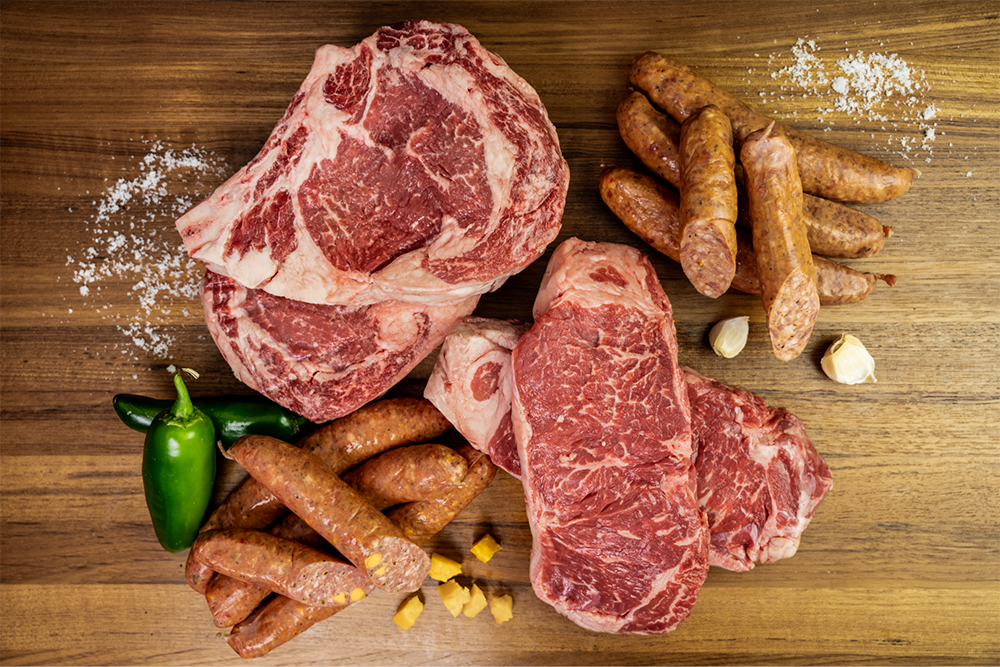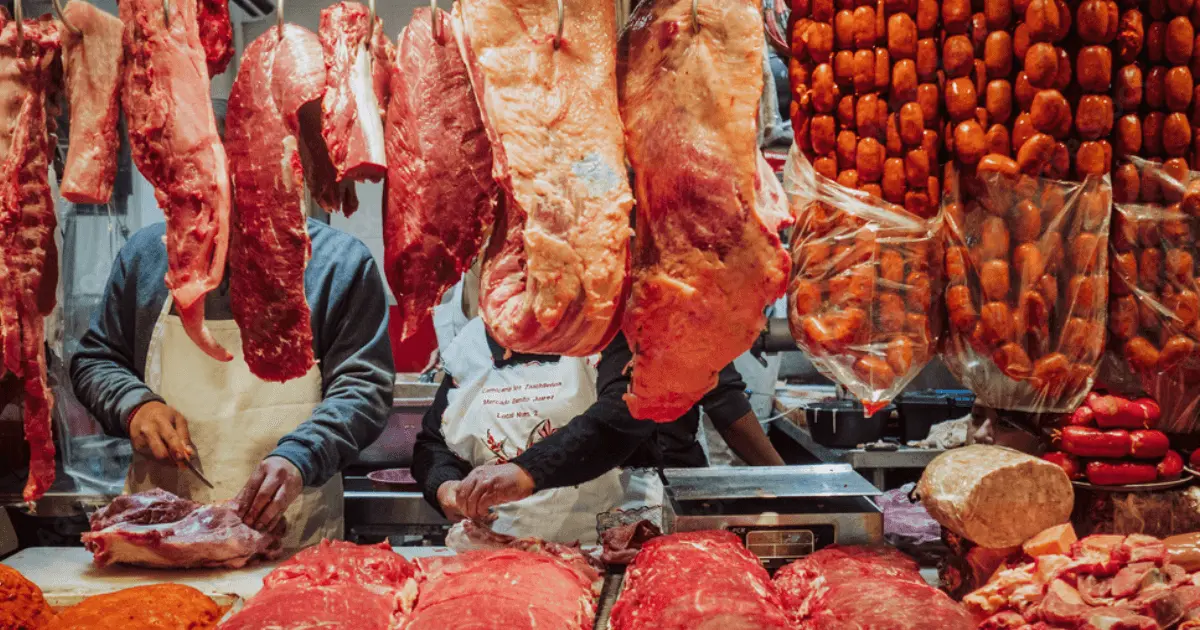See Bagley Farms Meat Market Edwardsville IL for Farm-Fresh Meat and Specialized Cuts
See Bagley Farms Meat Market Edwardsville IL for Farm-Fresh Meat and Specialized Cuts
Blog Article
Reveal the Art of the Butcher's Cut in a Modern Meat Market
In the ever-evolving landscape of modern meat markets, the butcher's cut has actually transcended its traditional origins, merging olden craftsmanship with modern practices. What genuinely sets the contemporary butcher apart is their ability to create a much deeper connection in between consumers and the origins of their meat.
Advancement of Butchery Techniques

The mid-20th century saw butchery strategies better improved by clinical insights into muscle mass biology and meat aging, improving both tenderness and taste. Technologies like vacuum cleaner packaging and refrigeration extended item shelf-life, permitting butchers to branch out offerings and improve quality assurance. This duration likewise marked the surge of customized devices, such as band saws and meat slicers, which increased accuracy and effectiveness in meat processing.
Computerized systems now help in monitoring animal provenance and optimizing cuts to fulfill certain customer preferences. In addition, a revival in artisanal butchery has actually emerged, blending typical skills with modern-day knowledge to cater to customers looking for ethical and sustainable meat alternatives.

Understanding Meat Cuts

Recognizing the ins and outs of meat cuts is necessary for both butchers and customers seeking quality and worth. Each cut originates from a various component of the animal, passing on unique tastes, appearances, and cooking methods. Proficiency of these distinctions not only enhances cooking experiences yet likewise optimizes the utility of each carcass. For butchers, accurate cuts mirror ability and respect for the craft, making certain very little waste and ideal return.
The primary classifications of meat cuts consist of primal, sub-primal, and retail cuts. Butchers after that damage these down even more right into sub-primal cuts, before lastly producing retail cuts offered to customers, like ribeye or tenderloin.
Understanding muscle mass make-up is vital; muscles utilized extra frequently by the animal often tend to be tougher and are best fit for slow-moving cooking techniques, while less-used muscular tissues, like those located in the loin, are much more tender and suitable for cooking or roasting. Familiarity with these distinctions encourages customers to make informed options, boosting their cooking endeavors.
Picking Quality Meat
Choosing the right meat involves more than just picking an aesthetically enticing item from the display screen. The art of picking quality meat needs a critical eye and knowledge of certain qualities that symbolize freshness and excellence. Pay attention to the shade; beef must have a brilliant, cherry-red color, while lamb should exhibit a soft pink tone, and pork a pale pink. This indicates the meat is fresh and hasn't been subjected to oxygen for too lengthy.
Second of all, think about the marbling, which describes the white flecks of fat within the muscular tissue. Appropriate marbling is an essential indication of tenderness and taste, as it melts throughout cooking, improving the meat's juiciness. Keep in mind, greater marbling commonly correlates with exceptional high quality cuts, such as USDA Prime.
Appearance is one more critical aspect; meat should feel strong to the touch, not slimy or excessively soft. Additionally, bear in mind the scent. Fresh meat must have a clean, neutral odor, without any type of sour or off-putting odors.
Coupling Cuts With Cooking Methods
Successfully combining cuts of meat with the appropriate cooking approaches is necessary for achieving ideal taste and texture. Different cuts differ in inflammation, marbling, and connective tissue material, each needing certain techniques to unlock their capacity. Tender cuts like filet mignon and ribeye, with their inherent marbling, benefit from high-heat, quick-cooking techniques such as cooking or pan-searing. These approaches improve the meat's all-natural flavors and make Go Here sure a juicy coating.
Conversely, tougher cuts like brisket and chuck roast are rich in collagen, which damages down right into jelly when prepared gradually. These cuts are excellent for braising or sluggish roasting, permitting the meat to soften gradually and establish deep, complicated flavors. Likewise, cuts such as short ribs and pork shoulder prosper with slow-cooking methods, where extended cooking times transform their durable appearances right into delicious meals.
Lamb shanks and oxtail, which require long term food preparation to tenderize, are ideal candidates for cooking or sluggish simmering. These approaches coax out abundant, hearty flavors while keeping dampness. By comprehending the distinct characteristics of each cut, cooks and home chefs alike can elevate their cooking developments, making sure each dish is both pleasing and unforgettable.
The Butcher's Role Today
Navigating the page progressing landscape of the modern meat market, the butcher's function today expands beyond plain preparation of cuts. Contemporary butchers are culinary craftsmens, educators, and supporters for lasting practices.
In enhancement to crafting precise cuts, butchers currently involve directly with clients, supplying cooking guidance and customizing selections to fit specific needs and preferences. Their expertise in meat aging, marbling, More about the author and taste profiles empowers customers to make enlightened decisions, enhancing their cooking experiences. This tailored service exemplifies the butcher's progressing duty as a trusted advisor in the kitchen area.
In addition, butchers are pivotal in reducing waste, using entire pets to create diverse products such as sausages and stocks - bagley farms meat market edwardsville il. This detailed strategy not only respects the animal but likewise straightens with modern sustainability objectives. In this means, the modern butcher embodies both tradition and development, adapting to an ever-changing market while protecting the creativity and honesty of their craft

Verdict
The contemporary butcher's craft intricately weaves typical methods with contemporary developments, stressing lasting practices and moral sourcing. Mastery in understanding varied meat cuts and quality indications equips butchers to provide enlightened suggestions, aligning certain cuts with optimal food preparation techniques. This competence not only boosts culinary experiences yet also reinforces the connection in between consumers and the beginnings of their food. By honoring historic practices while accepting contemporary demands, the butcher's duty remains essential in today's sophisticated meat market.
Report this page